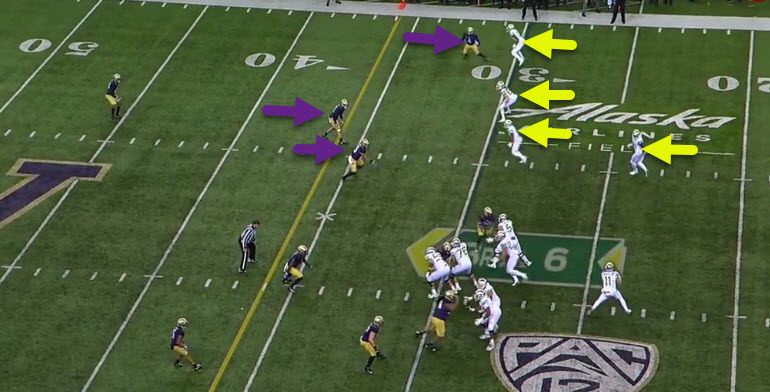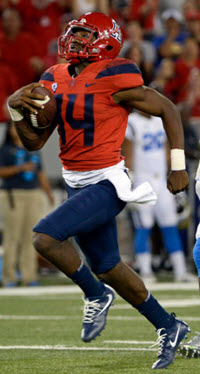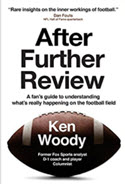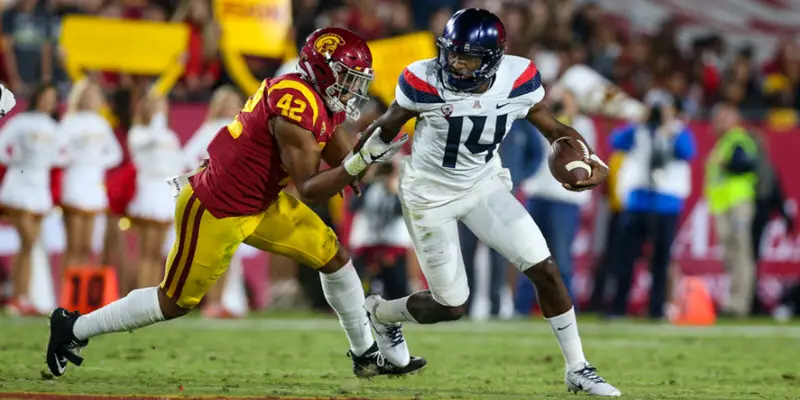Last week, the Ducks came to Seattle to play tough, hard-nosed football and scored on their first possession for a 3-0 lead. After stopping the Huskies on their next possession, they marched down the field only to fumble on UW’s 16-yard line. This mistake was the first of many to follow that would undo the Ducks, mistakes they could not recover from; miscues they need to avoid this week against Arizona.
With a bye week to rest and prepare, Oregon coach Willie Taggart has the opportunity of getting his squad back on track and knocking off an Arizona Wildcat team that is more dangerous than a cornered rattlesnake. Picked last in the South Division of the Pac-12 before the season, coach Rich Rodriguez had the good fortune to have a second string quarterback available when his starter was hurt; so adequate that sophomore Khalil Tate is currently a strong candidate for the Heisman Trophy.
Why not zone coverage with 21 yards-to-go on third down? In this obvious pass situation (above), the Duck defense is aligned in man-to-man coverage, with two safeties playing a combination bracket against the second inside receiver in a trips formation. Oregon’s front can’t get any pressure on UW quarterback Jake Browning and the Ducks’ right corner (15), a freshman, has no help against Washington’s receiver who runs a deep crossing route, making a diving catch for a 46-yard gain. As you see, the corner is not the only defensive back struggling to cover his receiver.

Three defenders on four WRs is NO respect for Oregon’s passing attack.
Coaches who have a running quarterback like to spread the field and the defense in an obvious passing situation. Receivers can run a pass route on their defender and drive them away from the ball, and as the quarterback drops to pass, the inside defenders give ground to protect their zones.
The problem for coach Taggart and the offense is that in this example (above), no one believes the Ducks are going to pass. Royce Freeman goes in motion before the snap, leaving the Ducks with four receivers to the wide side of the field. The Huskies only bother to have three defenders cover that group, knowing that if it’s a short screen they can overpower and run over the receivers trying to block and that Oregon refuses to run a pass play over ten yards deep.
Inside, the Huskies have three linemen covering the interior gaps against six offensive blockers. The center contacts the nose man and then leaves to go up field for the linebacker—no lineman would ever pass block that way: the center needed to set up, give a bit of ground, and allow the inside defenders to read pass. The play was rushed and the Huskies, who never had a chance to react to what might have looked like a pass, refused to be blocked– the result being a big pile at the line of scrimmage. Sadly, this has become a predictable third-down call when Braxton Burmeister has been the quarterback and the play has been routinely recognized and blown up.
Coach Taggart observed after the game that the line-drive punt to Dante Pettis was the reason Pettis was able to score a NCAA-record ninth punt return touchdown. In the play shown below, you will see that there was much more than his initial assessment as the Ducks cover team violated every conceivable tenet in punt coverage, virtually giving Pettis free passage to the end zone.
At the snap, the center was blown back to his left, leaving a hole in the coverage. The three-man shield (made up of big (slow) defensive linemen moved to the right in front of the kicker. Two outside players on the Oregon left side were run out of their lanes and with the third cover man coming down the left hash, 34 yards (width-wise) of turf were left for the remaining three cover men running from the right.
The kick is not a long one,(above) but the main problem is that the first two cover men fail to slow down in time (in relation to the punt returner setting to catch the ball), and run past Pettis, opening even more empty space. Two other defenders also overrun Pettis, who skips past the lumbering, stumbling linemen and punter, who have no physical chance to tackle a ball carrier with decent speed in the open field.
If the first two cover men (No. 19 and No. 12), had broken down, they would have been in position to squeeze Pettis and tackle him for a 4-5 yard return; better than the 64-yard touchdown. The play stoked the Husky sellout crowd wild and loud, and was a definite emotional turning point in a 3-3 game: the Ducks grew weaker while the Dawgs gained energy and momentum that lasted until the game was over.
This close-up above of the front-line cover guys out of control, too close to Pettis to break down and get their feet in position with a proper angle, to make a sure tackle. The basic rules for tacklers covering kicks are to keep the returner inside and in-front of them, in a balanced striking stance.
If the Ducks had covered their first punt to Pettis the way they did in this example above, there wouldn’t have been a NCAA record touchdown scored against Oregon. Although the Ducks are guilty of being in motion (Oregon left side) at the snap, the cover men are much more disciplined covering their lanes and the first wave slows down in time to get under control and be in position to stop Pettis in his tracks. It was the same kind of punt as the first—a low line drive, but this time the Ducks covered in disciplined fashion. The results speak for themselves.
Refreshed, Ducks Look to Secure Bowl Bid
Speaking of discipline, for the Duck defense to throttle Arizona’s great sophomore quarterback Khalil Tate, they will need to be at their best, for Tate has rushed for 1,293 yards in scrambles and option runs since taking over the Wildcat’s offense in week five. The Ducks need a win to finish the season 6-6 or better to earn a berth in a post season bowl game.

Khalil Tate
In knocking off the Wildcats, USC did a good job of forcing Tate to run between the tackles and he still ran for 161 yards. Watch Oregon’s edge defenders. On a pass play, they should not attempt to sack Tate by rushing inside the tackle’s pass block (unless it’s a stunt and another inside lineman loops outside to contain), or rush deeper than the quarterback is setting up to pass. In that case, it’s easy for the quarterback to step up inside his tackle and then run outside with no one to stop him on the edge.
Offensively, the Ducks should be able to run on the smaller Wildcat defense. If Justin Herbert plays, and the wide receivers line up correctly and run the right routes, there is a chance Oregon could make over 100 yards passing. If the coaching staff reviewed Braxton Burmeister’s high school films over the bye week, and the much-maligned lad has to play, Taggart might call a pass or two down the field instead of the four-yards-and-a-cloud-of-dust bubble screens that do nothing to take advantage of the ways in which enemy defenses are currently ignoring receivers in covering the various Duck offensive formations.
Retired College Coach Ken Woody
Eugene, Oregon
Top Photo: Jordon Kelly/fi360 News
Ken Woody is a former Fox Sports football commentator who played defensive back, receiver and kicker for Oregon from 1966 to 1970. He coached college football for 18 years, including stints as an assistant coach at Oregon, Washington, Washington State and Utah State, and was head coach at Whitman College and Washington University-St. Louis.
 Buy the book to learn from Coach Woody, or give a gift of football.
Buy the book to learn from Coach Woody, or give a gift of football.
“Every Oregon fan should have a copy to learn from as I do.” Charles Fischer
Related Articles:
Seven Offensive Coordinator Candidates for the Oregon Ducks
Five Candidates to Replace OC Marcus Arroyo
Coach Jim Mastro: The Perception, and the Truth
Has Oregon Turned the Corner on Offense?
Ducks, Taggart Punish Beavers; Earn Bowling Trip
Textbook Defense, Herbert's Return Energize Duck Victory; Civil War Next
“I learned football working under many great coaches, among them Len Casanova, Jerry Frei, John Robinson, Bruce Snyder, George Seifert,and Ron Stratten at the University of Oregon, Jim Owens at the University of Washington and Jim Walden at Washington State University. Most of my coaching experience was on the offensive side of the ball with quarterbacks, receivers and kickers although as a head coach I coached defensive backs, linebackers and offensive line.
I achieved my first goal of being the youngest head coach in college football at the age of 26 and throughout my career in coaching and outside of it, as a journalist and broadcaster, have experienced how exciting and gratifying it is teaching the game to others.”

